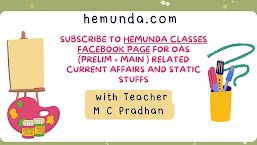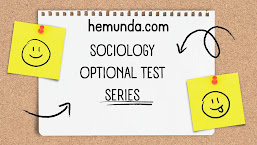Public Policy, Its Main Models and Approaches
Public policy is about solving and addressing the problems related to public. Public policy is basically an instrument to guide societal actions in accordance with certain predetermined goals.
In making of public policy, there are two types of actors (stakeholders): on the one hand, there is the government, and on the other hand, there is the public; both play key role in shaping the public policy.
They are the means by which community are served. Public policy plays a very important role in assessing government’s work. Without public policy government and administration won’t work properly. There is also a saying that when the policy fails, the government fails.
Defining Public Policy
Before knowing the definition of public policy, it is very important to know the concepts of ‘public' and ‘policy'. The first component, ‘public’ poses maximum conceptual difficulties to conclusively define public, because of its multiple dimension which cannot be seen in single lens. However, attempted were made to find the concept. ‘Public’ is derived from Latin word, ‘poplicus’ or ‘populus’, which refers to the people involved in certain activities to fulfill common goals. People remain the most important part of this domain, called ‘public’. Since then, it has been argued that public will be an active participant in change, rather than a passive and docile recipient of instructions or dispensed assistance.
The second component of public policy is ‘policy', laymen defined it as an instrument that is used to pursue pre-determined ideological goals. With 3 sets of alphabets, the acronym is expanded as, PO Periodically organized, LI-legally induced, CY-Calculated yields. So, the policy is defined as periodically organized, legally induced calculated yields.
Robert Presthus defines policy as “a choice made by an individual or group of individuals that, justifies, guides or a certain course of action'. Thus, it can be defined as a proposed action, to realize a specific objective or purpose, within a given environment.
Keeping in view the complexities in defining each component individually, ‘public policy’ has as many definitions as there are continuous changing political issues.
Thomas R. Dye defines public policy as “whatever government wants to do or not to do”. This includes all actions and inaction of the government.
B. Guy Peters defines “public policy is the sum of government activities, whether it is acting directly or through agents, as it has an influence on the lives of citizens”.
James E. Anderson defines “public policy is a purposive course of action followed by an actor or set of actors in dealing with a matter of concern”.
Larry N. Gerston defines public policy as 'the combination of basic decisions, actions, and commitments made by those who hold or affect government positions of authority. Yehezkel Dror defines public policy as a 'dynamic process which decides major guidelines for action directed at the future, mainly by governmental organs. These guidelines aim at achieving what is in public interest by the best possible means.
These are some of the important definitions of public policy.
Models and Approaches to Public Policy
Public policy is a part of political science, over the years political scientists have tried to develop a number of models and approaches to help us understand political life. A model is a simplified representation of the real world.
Models helps identifying problems and to understand the public policy and consequences of policy better. Models enables the common man to understand the dynamics of policy formulation behind the closed doors. These models show different ways of looking at public policy.
According to Thomas dye, the purpose is to:
simplify and clarify our understanding about government and policies;
identify important political forces in society;
communicate relevant knowledge about political life, to direct inquiry into politics; suggest explanation for political events;
direct our efforts to understand public policy better by suggesting what is important and what is unimportant.
Based on Thomas R. dye’s classification, a brief description of each model, with particular attention to the separate ways in which public policy can be seen, is given. Some of the models are: institutional model, group model, elite model, rational model, incremental model, game theory model and systems model.
Institutional Approach: Policy as Institutional Output
Institutional approach tells us that public policies have their origin in governmental institutions such as legislatures, executives, courts and political parties.
According to this view a policy becomes public policy only when it is authoritatively determined by the governmental institutions. Executive, administrative bodies and the judiciary have the power to make and enforce policies. Each institution performs in a different way from others:
Legislative institutions: It is concerned with the central tasks of policy formation and law making in a political system. It also performs other functions like scrutinizing, criticizing, deliberating and publicizing government policies and their consequences of the policies on the floor of the house.
Executive institutions: Modern governments vitally depend on the executive institutions for the policy formulation and execution. Especially in the parliamentary form of government, all policies must have approval of the cabinet. In real terms, it is the cabinet which shapes the public policies.
Judiciary institutions: In countries where courts have the power of judicial review, they play an important role in policy formulation.
State-centered theory (or state-centred federalism) is a political theory which stresses the role of the government on civil society. It holds that the state itself can structure political life to some degree, but doesn't facilitate the way power is distributed between classes and other groups at a given time.
Group Theory: Policy as Group Equilibrium
Group theory believes that group interests and attitude are influential factors in determining public policy. Public policy is the product of group struggle in group theory.
AS Earl Latham states, “public policy is the equilibrium reached in this (group) struggling at any given moments, and it represents a balance which the contending factions or groups constantly strive to wait in their favor”.
As different interest groups also struggle among themselves to influence public policy, actual policy-making in government tends to tilt towards the group that are gaining in influence. Thus, public policy, at any given time, will reflect the interests of the dominant groups. This is clear example of influence of powerful interest groups on the policies of government.
However, group theory is criticized on a number of grounds. The weakness of this theory is that it overstates the importance of groups and understated the independent and creative role that public officials play in the policy processes. It is also misleading and inefficient to explain politics or policy formulation in terms of group struggle without giving attention to other factors, like institutions and ideas which independently affect the policy-making process.
As professor Schattschneider remarks, “the flaw in the pluralistic heaven is that the heavenly chorus sings with a strong upper-class assent”. Those who are not represented will have little voice in policy-making and thus their interests are likely to be slighted therein.
Pluralistic Theory
Classical pluralism is the view that politics and decision-making are located mostly in the framework of government but that many non-governmental groups use their resources to exert influence. The central question for classical pluralism is how power and influence are distributed in a political process.
Groups of individuals try to maximize their interests. Lines of conflict are multiple and shifting as power is a continuous bargaining process between competing groups.
Perhaps the best examples of the pluralism movement can be found in the end of white apartheid in South Africa, the establishment of the “Racial Civil Rights Movement” and the enactment of the “Civil Rights Act” of 1964 and the “Voting Rights Act” of 1965 in the United States.
Q. Consider the following statements in respect of Pressure Groups:(OAS Prelim 2021)
These groups act as Interest Groups and:
(i) Can influence the government regarding their particular interests.
(ii) The policies pursued by these groups will provide common benefits to society.
(iii) In order to influence the government, they require a number of members.
(iv) State Centred Theory assumes that these groups do not have enough popular support.
Which of the above statement/s is/are correct?
(i) and (ii)
(i) and (iii)
(ii) and (iii)
(i) and (iv)
The correct answer is (i) and (iv).
Key Points
Pressure Groups in India
A large number of pressure groups exist in India. But, they are not developed to the same extent as in the US or western countries like Britain, France, Germany and so on. In India, pressure groups are organized around religious, regional, and ethnic issues. So The policies pursued by these groups will not provide common benefits to society. Hence, Statement (ii) is incorrect.
Pressure Groups – Role.
Interest groups seek to influence public policy in the desired direction without being ready to accept the responsibility of public office as well as by declining to hold direct responsibility for ruling the country. Hence Option (i) is correct.
They are concerned with specific programs and issues and their activities are confined to the protection and promotion of the interests of their members by influencing the government.
They seek to promote, discuss, debate, and mobilize public opinion on major public issues. In this process, they educate people and widen their vision, enhance their democratic participation, and raise and articulate various issues.
These groups try to bring changes in public policy.
The pressure groups resort to such activities to influence governmental policies. They do not require numbers to do so. Hence Option (iii) is not correct.
State-centered theory (or state-centered federalism) is a political theory that stresses the role of the government in civil society. It holds that the state itself can structure political life to some degree, but doesn't facilitate the way power is distributed between classes and other groups at a given time. Hence Option (iv) is correct.
Some Examples of Pressure groups in India :
Business Groups – ASSOCHAM, FICCI, etc
Agrarian Groups - All India Kisan Sabha, Bhartiya Kisan Union, etc
Religious Groups – RSS, Vishwa Hindu Parishad, Jamaat-e-Islami, etc.
Elite Theory: Policy as Elite Preference
This theory views public policy as the interests, preferences and values of the governing elite. It believes that people are passive, apathetic and ill-informed about public policy. Initiative for public policy usually don’t come from masses. The elite actually shape mass opinion into a policy question. Thus, public policy really turns out to be the preference of elite.
The elite theory seems to be close to the group theory, as both refers to policy generation through pressures from specific interests in the society. The credit for elite theory primarily goes to Parito, Mosca and Michael’s. It is evident from the above that elites dominate the masses as they are organized and effective. Policies framed for the masses are initiated by the elites. Thus, public policy really turns out to be the preferences of the elites.
However, this model is criticized for neglecting the wishes of the masses and their domination by the elite. Policy-making power in a system is highly centralized in the hands of governing elite. Public policy, therefore, reflects their choices and preferences. Any change in system is highly opposed. The elites believe that they, rather than masses, have the ability to determine the policies of public welfare.
Rationalism Theory: Policy as Maximum Social Gain
A rational policy achieves maximum social gain. Maximum gain means, government should choose policies which result in gains to society which exceed costs by the greatest amount, and governments should refrain from policies if costs are not exceeded by gains.
There are 2 important guidelines in the definition,
first one is, no policy should be adopted if its costs exceed its benefits.
Second, among policy alternatives, decision makers should choose the policy which produces the greatest benefit.
It means a policy is rational when the difference between the values it achieves and the values it sacrifices is positive and greater than any other policy alternative.
One shouldn’t see rationalism in a narrow dollars and cents framework, in which basic social values are sacrificed for money savings. Rationalism involves calculation of all social, political and economic values sacrificed are achieved by a public policy, not just those that can be measured in dollars.
Rational policy makers must know, all the societies value preferences and their relative weights, all the consequences of each policy alternative, policy alternatives available; calculate the ratio of benefits to costs for each policy alternative and select the most efficient policy alternative.
Rationalism theory assumes that the value preferences of society as a whole can be known and weighed.
This policy is criticized because the applicability of a rational model policy making model is limited by the uncertainty of its consequences, time taking process. Despite these limitations, the model remains very important as it helps to identify barriers to rationality.
Q. "Policy as Rational choice in competitive situation is: (OAS Prelim 2020)
Game Theory
Rational Theory
Group Theory
Systems Theory"
Explanation
"The correct answer is Rational Theory.
Key Points
The rational theory describes how governments while making policies, use facts, reports and information, analyse them and follow a step-by-step procedure to take a decision regarding policies.
It states that every choice that is made is first considered by the costs, risks and benefits of making that decision.
Choices that seem irrational for one social group may make perfect sense to another based on the group's desires.
It helps to describe voting behaviours, the actions of politicians and how political issues are handled.
It expresses that governments don’t make choices because of unconscious assumptions, rather they rationally consider the outcome and potential benefits.
Additional Information
Rational choice theory refers to a set of guidelines that help understand economic and social behaviour.
The theory postulates that an individual will perform a cost-benefit analysis to determine whether an option is right for them.
It also suggests that an individual's self-driven rational actions will help better the overall economy.
Systems theory describes the policy as the response of the political system to meet the changing demands and desires of the people.
Group theory seeks to maintain equilibrium in society and balances the interests of various groups.
The game theory works to come up with solutions regarding social situations that arisen among various actors and strategically produces an optimal decision for those competing actors."
Incremental Model: Policy as Variations on the Past
Incremental models says that public policy is a continuation of past government activities with incremental modifications.
Lindbolm proposed this model in the course of a critique of the traditional rational model of decision making. According to this model decision makers do not annually review the whole range of the existing and proposed policies because of the constraints of time, intelligence and cost it involves.
Policy makers accept the legitimacy of previous policies because of the uncertainty about the consequences of completely new or different policies. Incrementalism is helpful in reducing conflicts, maintaining stability and preserving the political system itself.
Charles Lindbolm coined the term disjointed incrementalism as the description of the policy making process. Disjointed refers to disconnect between the assessment of conditions and the development of responses to them.
Policy makers consider and implement very few and very small policy changes very slowly. Incremental model believes that people are pragmatic, seeking not always the single way to deal with a problem but, working modestly on something that will work.
Incremental model is conservative in nature as it prefers to continue the existing policies and has no vision for change, so there is little space for change and innovation in this model. Thus, completely rational policy may turn how to be inefficient if the time and cost of developing a rational policy are excessive.
Q. Consider the following statements in respect of Incremental Model of Policy Formulation:(OAS Prelim 2021)
(i) The concept of incrementalism in policy formulation is put forwarded by Robert Dahl.
(ii) The disjointed policy making depicts policy making as a process of muddling through.
(iii) The synoptic model of policy formulation acknowledges man's limited problem solving capacities.
(iv) Disjointed incrementalism explains governmental decision making.
(v) Logical incrementalism explains strategy formulation in large and complex business organisations.
Which of the above statement/s is/are correct?
(i), (ii) and (iii)
(ii), (iii) and (v)
(ii), (iv) and (v)
(iii), (iv) and (v)
The correct answer is (i), (ii), and (iii).
Key Points
The use of numerous small incremental changes rather than a few (extensively planned) large jumps is known as incrementalism.
It is implied by logical incrementalism that the steps in the procedure make sense.
Logical incrementalism focuses on "the Power-Behavioral Approach to planning rather than to the Formal Systems Planning Approach".
This theoretical policy of rationality was developed by political scientist Charles E. Lindblom in the 1950s . Hence option (i) is correct.
As a compromise between the rational actor model and bounded rationality, as long-term, goal-driven policy rationality and satisficing were not considered sufficient.
Incrementalism, also disdainfully called disjointed incrementalism, is a policy making process which produces decisions only marginally different from past practice.
Some analysts describe incrementalism as muddling through, in contrast to the ideal of the rational-comprehensive model of policy planning. Hence option (ii) is correct.
In general, the synoptic model tackles two key issues for models of policymaking:
Uncertainty and
several decision-makers
First, when faced with uncertainty, a decision-maker may be unsure of the goals, alternative methods for achieving the goals, connections between alternatives and their effects, and effects of those alternatives. Hence option (iii) is correct.
Logical incrementalism is a process approach that, in effect, fuses strategy formulation and implementation.
Game Theory: Policy as Rational Choice in Competitive Situations
Game theory is the study of rational decisions in situations in which two or more participants have choices to make and the outcome depends on the choices made by each of them. In this model there is no independently best choice that one can make - where the best outcomes depend on what others do.
In this model decision makers are involved in choices that are interdependent. Perhaps the idea of the game is unfortunate, suggesting that game theory is not really appropriate for serious conflict situation.
A player may be an individual, a group, or a nation government, indeed any body with well defined goals that is capable of rational action.
Game theory is a deductive end abstract model of policy making. It does not describe how people actually make decisions, but rather how they would go about making decisions in competitive situations if they were completely rational.
Hence game theory is a form of rationalism, but it is applied in competitive situations, where the outcome depends on what two or more participants do.
A key concept in this theory is strategy. Game theories defines the term minimax strategy to refer to the rational strategy that either minimizes the maximum loss or maximizes the minimum gain for a player, regardless of what his opponent does.
The minimal strategy is designed to protect the player from the best play of his opponents. It might be viewed as conservative strategy in that it is designed to reduce loses and ensure minimum gains rather than to seek maximum gains at the risk of great losses.
Most game theorist view minimal as the best rational strategy. It embraces both very complex and very simple ideas.
Policy makers know the real payoff values for themselves or their opponents of various policy alternatives.
The prisoner’s dilemma is the best example of game theory, in which two prisoners conspired to commit to crime are caught. They will be put in separate cells and each told that if they confess, they will receive a mild punishment. The dilemma for each is the fear that if the other confesses Andre does not, this will result in a severe punishment.
Game theory provides an interesting way of thinking clearly about policy choices in conflict situations.
Q. Consider the following statements in respect of the Game Theory of Policy Evaluation:(OAS Prelim 2021)
The basic concepts of Game Theory model are:
(i) Players in a game can be people, governments or institutions.
(ii) Strategies are selected by players without anticipating the moves of other players.
(iii) Players have different preferences among the possible outcomes.
(iv) Payoffs are often used to represent the value of these outcomes to different players.
Which of the above statement/s is/are correct?
(i), (iii) and (iv)
(i), (ii) and (iii)
(ii), (iii) and (iv)
(i), (ii) and (iv)
The correct answer is (i), (iii) and (iv).
Key Points
According to some, game theory is the science of strategy that falls under probability distribution.
It specifies the logical and mathematical moves that players should make in order to maximise their own chances of success in the games.
John von Neumann and Oskar Morgenstern provided the game theory that is familiar to economists, social scientists, and biologists with its first general mathematical description (1944).
Components of Game Theory:-
Players- A player is a strategic decision-maker within the context of the game. It can be a people, governments or institutions, Hence Statement (i) is correct.
Strategy-The full course of action a player will take in response to the possible game-related conditions. It can selected by players with or without anticipating the moves of other players. Hence statement (ii) is incorrect.
Payoff: The reward a player receives after achieving a certain result. (The payment may be in any form that can be quantified, such as money or utility). Hence Statement (iv) is correct.
Equilibrium: Since players can have different preferences , So the point in a game where both players have made their decisions and an outcome is reached is called Equilibrium. Hence statement (iii) is correct.
Additional Information
One of the example of game theory is The Centipede Game explained below-
The centipede game is an extensive-form game in game theory in which two players alternately get a chance to take the larger share of a slowly increasing money stash.
It is arranged so that if a player passes the stash to their opponent who then takes the stash, the player receives a smaller amount than if they had taken the pot.
The centipede game concludes as soon as a player takes the stash, with that player getting the larger portion and the other player getting the smaller portion.
The game has a pre-defined total number of rounds, which are known to each player in advance.
Systems Approach: Policy as System Output
This approach considers public policy as an outcome of the political system. The political system as defined by David Easton, is composed of those interrelated institutions and activities in a society that make authoritative decision that are binding on society.
Inputs into the political system from the environment consists of demands and supports. The environment consists of all those conditions and events external to the boundaries of the political system.
Demands are claims made by individuals and groups on the political system for action to satisfy their interests. Outputs are authoritative value allocations the system, and these allocations constitute public policy.
This theory is useful in organizing our inquiry into policy information. It shows us about the role of environmental inputs to affect the content of the public. It is argued that this model is too simplistic in nature. In many cases, policies do not appear to follow such a logical sequence.
This model also ignores how decisions are made and policy is developed within Blackbox called the political system.
Another shortcoming of this model is that it ignores an important element of the policy process, namely, that the policy makers, including institutions have also a considerable potential in influence environment within which they operate.
Conclusion
In general, public policy is a tool for directing public actions in accordance with certain predetermined goals. It helps to understand the social problems prevailing in the society and provides an appropriate solution to the problem.






































0 Comments
please do not enter any spam link in the comment box.